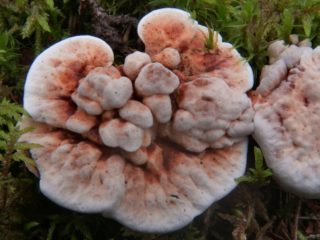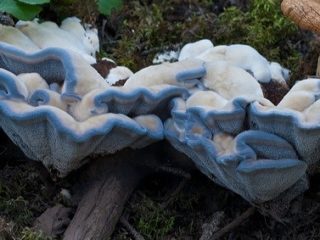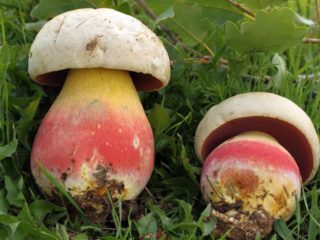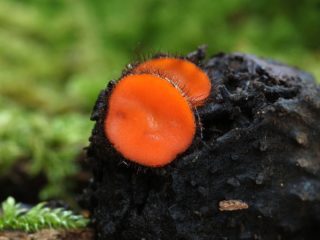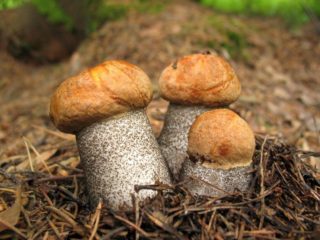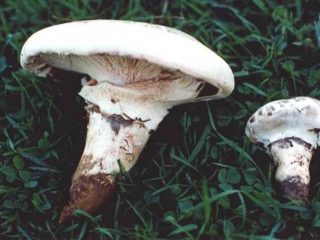Content
Hydnellum rust or dark brown is a mushroom of the Bankeraceae family. The fruiting body of this species has a specific structure, slightly reminiscent of a concave thicket on a short stalk. Hydnellum rust has a unique feature - it overgrows obstacles during growth.
What does rusty hydnellum look like?
The fruiting body of the mushroom is arranged according to the classical scheme: it consists of a cap and a stalk. Sometimes it is difficult to distinguish the transition from one part to another, since due to the special structure of the hymenophore, the boundary of separation between them is practically undetectable. In some specimens, on the contrary, the leg is well defined and has a relatively long length.
The diameter of the cap is from 5 to 10 cm, while when the mushroom is young it is round or club-shaped. With age, a barely noticeable concavity appears on it, and old specimens look like a bowl or funnel. The surface of the cap contains a large number of tubercles. However, it is velvety and has an almost uniform texture (except for a harder center).
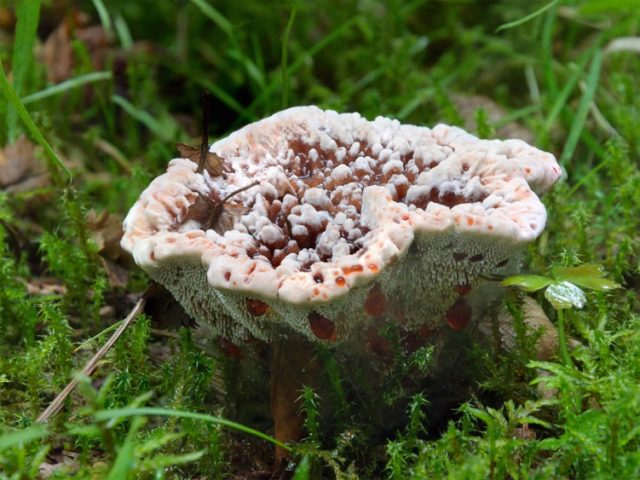
Adult fruiting body of Hydnellum rusty
The color of the cap is white when young, changing to light brown with age. Sometimes red or purple drops of liquid appear on it, which, when dried, covers the rusty hydnellum with spots of various shades of gray.
The mushroom pulp is actually two-layered. The outer fibrous shell hides a dense white tissue. In the center of the cap the flesh is very hard and has a leathery consistency. As the fruiting body grows, it envelops various obstacles encountered in the form of branches, stumps and stones.
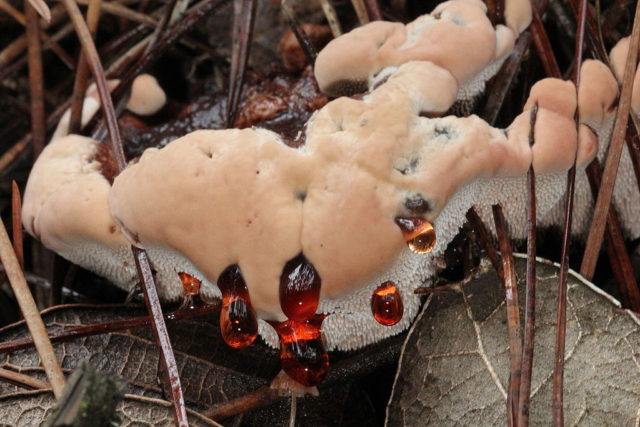
Incorporation of external objects into the structure of the mushroom as its cap grows
The leg is about 2-5 cm long. The outside is covered with soft tissue with a brownish-brown tint. The structure of the outer layer of the stem is similar in consistency to the top layer of the cap and differs from it only in coloring.
The hymenophore of Hydnellum rustus has a spinous structure. It consists of many segments, several millimeters long, hanging from the underside of the cap. Their color in young mushrooms is white, in mature ones it is dark brown or brown. Even with a light touch the thorns will break off. The spores are yellowish in color.
Where does Hydnellum rust grow?
It is found everywhere in temperate climates and subtropics of the Northern Hemisphere. Specimens of Hydnellum rust can be found in northern Scotland and Scandinavia. To the east it is distributed to the shores of the Pacific Ocean. Extensive growth areas are observed in Central Europe, Western Siberia and northern Africa.
Forms mycorrhiza with coniferous trees. Loves mossy types of substrate, as well as highly acidic soils. They will willingly settle on the borders of different types of terrain: edges, clearings, along paths. It can often be seen near a person’s home. Fruiting occurs in mid-summer and lasts until October.
Is it possible to eat Hydnellum rusty?
According to modern classification, this species is classified as inedible. At the same time, many researchers note a fairly strong aroma of fruiting bodies, similar to the smell of freshly ground flour.
Conclusion
Hydnellum rust is an inedible mushroom of the Banker family, widespread in the temperate climate of the Northern Hemisphere. A peculiarity of this species is the ability of its fruiting body to grow over obstacles as it increases in size. The mushroom has a spiny hymenophore, which is unusual for many representatives of the Kingdom.


